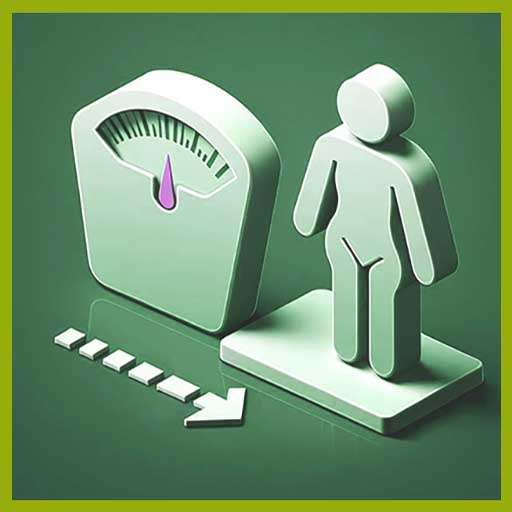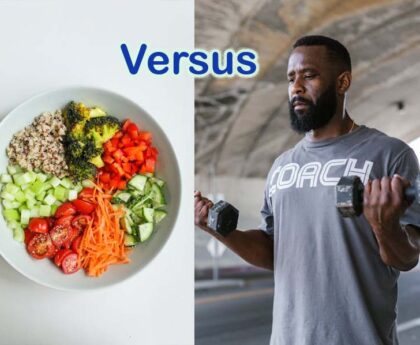Achieving weight loss isn’t a walk in the park, especially when you want to do it healthily and sustainably. To reach your weight loss goals, implementing targeted workouts along with a balanced diet can bring about drastic changes. This comprehensive guide offers a deep dive into the most effective exercise types that can help you shed those extra pounds safely, as recommended by health and fitness experts.
Important Considerations for Weight Loss
When embarking on a weight loss journey, the most crucial factor is achieving a calorie deficit, meaning you’re consuming fewer calories than your body needs to maintain general body functions. Pairing this with the right kind of exercise can significantly enhance your weight loss efforts. However, keep in mind that weight loss is not a linear process and can be influenced by a variety of factors such as:
- Dietary habits
- Initial weight
- Exercise intensity and duration
- Age and genetics
- Stress management and sleep quality
- Underlying medical conditions or medications
Each of these elements can directly or indirectly impact your weight loss rate. Therefore, it’s essential to adopt a holistic approach towards weight loss, combining effective workouts with a healthy eating regimen.
High-Intensity Interval Training (HIIT)
When it comes to calorie-burning exercises, High-Intensity Interval Training (HIIT) takes the cake. HIIT involves short, intense bursts of physical activity, followed by brief rest periods. The key to HIIT’s effectiveness lies in its ability to spike your heart rate and body temperature temporarily, thereby boosting metabolism.
A study published in the Physiology Reports journal revealed that the calorie-burning effects of HIIT could extend beyond the workout session, further aiding weight loss.1 HIIT can be applied to various exercises, including running, cycling, rowing, and even walking.
HIIT Workout Example:
Start with a warm-up exercise for one minute at a moderately intense pace. Then, follow it up with one minute of rest or low-intensity exercise. Repeat this cycle for about 30 minutes.
Strength or Weight Training
Strength or weight training is another highly effective workout regimen for weight loss, focusing on building lean muscle mass. The more muscle mass you have, the higher your resting metabolic rate (RMR), which means you’ll be burning more calories even when you’re not exercising.
A 2018 review published in the Metabolism journal confirmed the strong connection between muscle mass and RMR.2 Heavier weights lifting for six or fewer repetitions can result in increased calorie burn even post-workout, as per a study published in 2012 in the Journal of Translational Medicine.3
Strength Training Workout Example:
Perform a basic dumbbell circuit: Complete 10 squats, 10 dumbbell rows per arm, and 10 push-ups of your choice. Move right into the next exercise as you finish the reps. Do 3 rounds with 1-2 minutes of rest in between each round.
Yoga, Pilates, and Stretching
While yoga, pilates, and stretching may not burn calories like HIIT or weight training, they can significantly improve your strength and flexibility, supporting your overall weight loss efforts. Moreover, yoga has been known to reduce stress, which can indirectly aid in weight loss by controlling stress-induced eating.
Yoga Routine Example:
Start with a 10-minute warm-up of gentle yoga poses like cat-cow, downward dog, and child’s pose. Follow it up with a series of sun salutations for about 20 minutes. Finish the session with a cooling down period of gentle stretches and relaxation poses.
Other Effective Workouts for Weight Loss
Aside from HIIT, strength training, and yoga, there are several other workouts that can help you lose weight. Here are some of them:
1. Walking and Hiking
Walking is an excellent low-impact exercise that can contribute to weight loss. It’s particularly suitable for those who require low-impact exercises or are just starting their weight loss journey. On the other hand, hiking offers a more intense calorie burn compared to walking, thanks to the challenging terrains and elevations.
2. Jump Rope
Jumping rope is a fun and efficient way to burn calories. It not only improves cardiovascular health but also promotes all-over toning and coordination.
3. Swimming
Swimming is a low-impact exercise that combines cardio with strength training. It’s particularly beneficial for those who don’t enjoy high-impact exercises like running or jumping.
4. Cycling and Spinning
Cycling, whether on an actual bike or a stationary one, is one of the best ways to burn calories and build endurance. It’s a low-impact alternative to running and can be just as effective for weight loss.
5. Stair Climbing
Stair climbing is a low-cost, versatile exercise for weight loss. It’s a great way to burn calories and strengthen your leg muscles.
Making It a Habit
While all these workouts can effectively aid in weight loss, the best workout is the one you enjoy doing. A 2017 study published in Obesity found that a consistent exercise routine is the most significant factor in long-term weight management.4 So find a workout you love and make it a regular part of your routine for sustainable weight loss.
Conclusion
While the journey to weight loss may seem daunting, incorporating the right workouts, maintaining a balanced diet, and adopting a consistent routine can make all the difference. Remember, the key to successful weight loss is not just about burning calories, but also about enjoying the process. So, find a workout you love and start your journey towards a healthier, fitter you today!
References
- Sevits KJ, Melanson EL, Swibas T, et al. Total daily energy expenditure is increased following a single bout of sprint interval training. Physiol Rep. 2013;1(5):e00131.
- Petridou A, Siopi A, Mougios V. Exercise in the management of obesity. Metabolism. 2019;92:163-169.
- Paoli A, Moro T, Marcolin G, et al. High-Intensity Interval Resistance Training (Hirt) influences resting energy expenditure and respiratory ratio in non-dieting individuals. J Transl Med. 2012;10:237.
- Feig EH, Lowe MR. Variability in weight change early in behavioral weight loss treatment: Theoretical and clinical implications. Obesity (Silver Spring). 2017;25(9):1509-1515.







